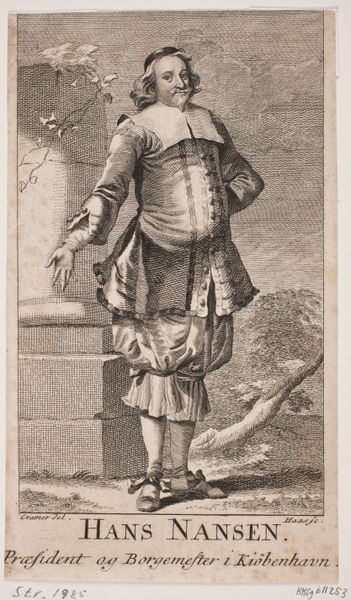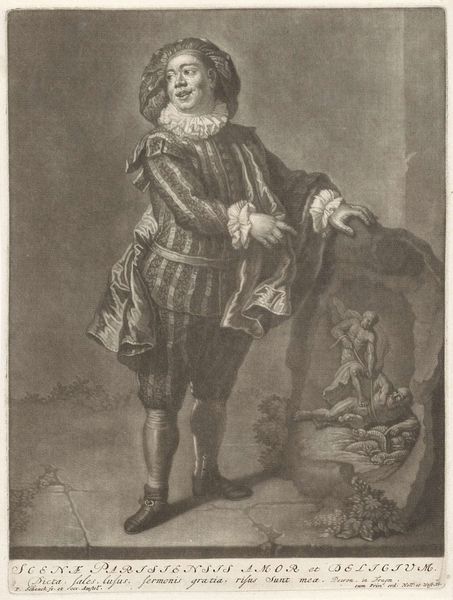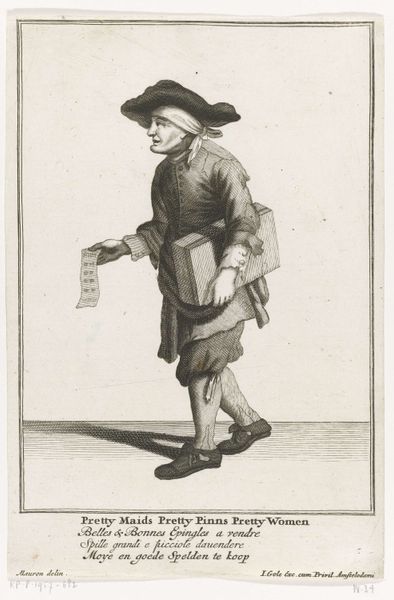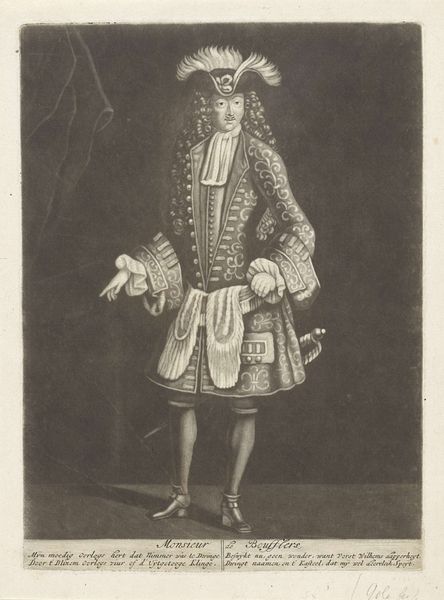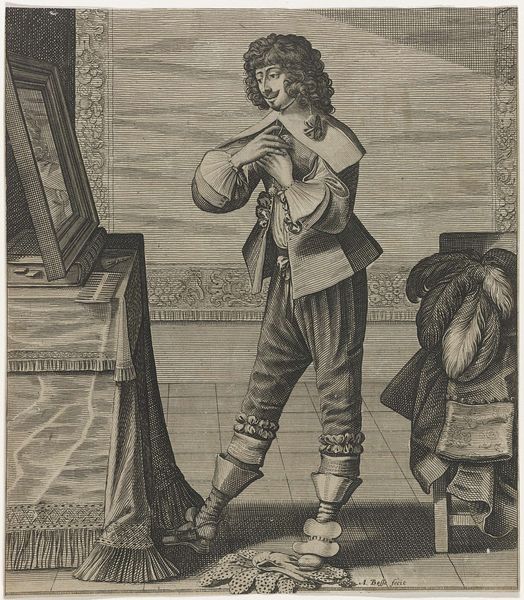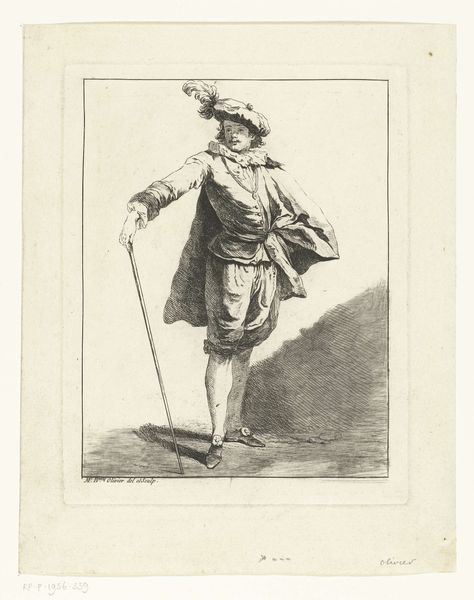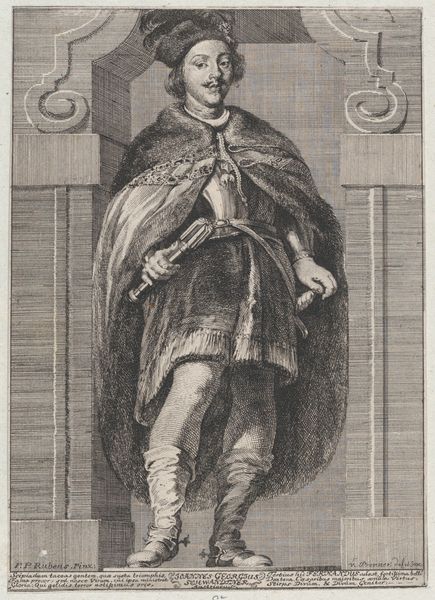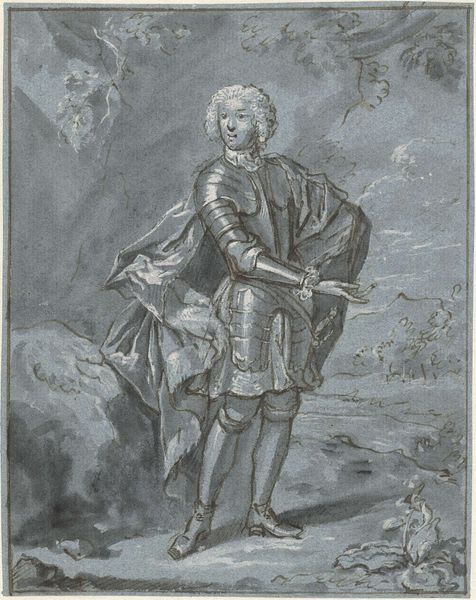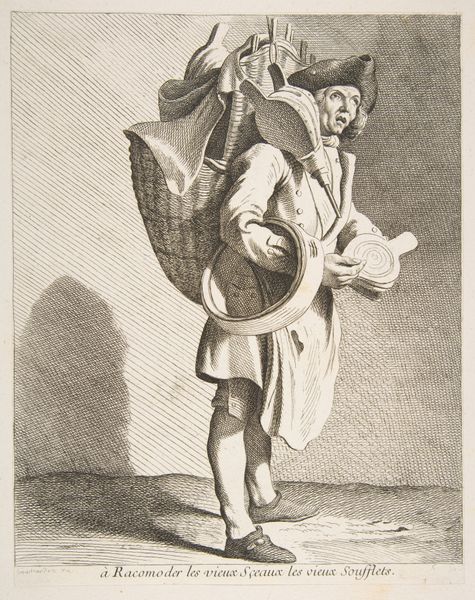
print, engraving
#
portrait
#
narrative-art
#
baroque
# print
#
portrait reference
#
portrait drawing
#
history-painting
#
engraving
Dimensions: height 259 mm, width 178 mm
Copyright: Rijks Museum: Open Domain
Editor: Here we have Jacob Gole's "Portret van Angelo Constantini", an engraving made sometime between 1670 and 1724. I’m struck by how this print elevates an actor, depicting him with such rich detail and placing him alongside a classical scene. What aspects of the printmaking process or its materials interest you most? Curator: Well, the print as a medium is really key here. It speaks volumes about access and circulation. Engravings allowed for the mass production of images. It takes what was, essentially, the portrait of an entertainer, Angelo Constantini, and makes it available to a much wider audience. Think about the social implications: this isn't a royal portrait reproduced for the elite; it brings an actor's image into more modest homes. Editor: That’s fascinating! So the choice of engraving democratizes the image itself? Curator: Exactly. And consider the labor involved. Engraving requires meticulous skill. The engraver isn’t just replicating an image; they’re interpreting it through a specific, laborious process that leaves an imprint of their craft. And look at the other elements surrounding him and ask, are they mass produced too? Editor: I hadn't considered the print as a statement on the value, the democratization, of portraiture. The means of production directly influenced who had access. Thank you! Curator: Precisely. And by examining these material realities, we can move beyond seeing this just as a simple portrait. We gain insight into the print’s intended audience, their consumption of images, and the broader socio-economic landscape in which it was made.
Comments
No comments
Be the first to comment and join the conversation on the ultimate creative platform.
